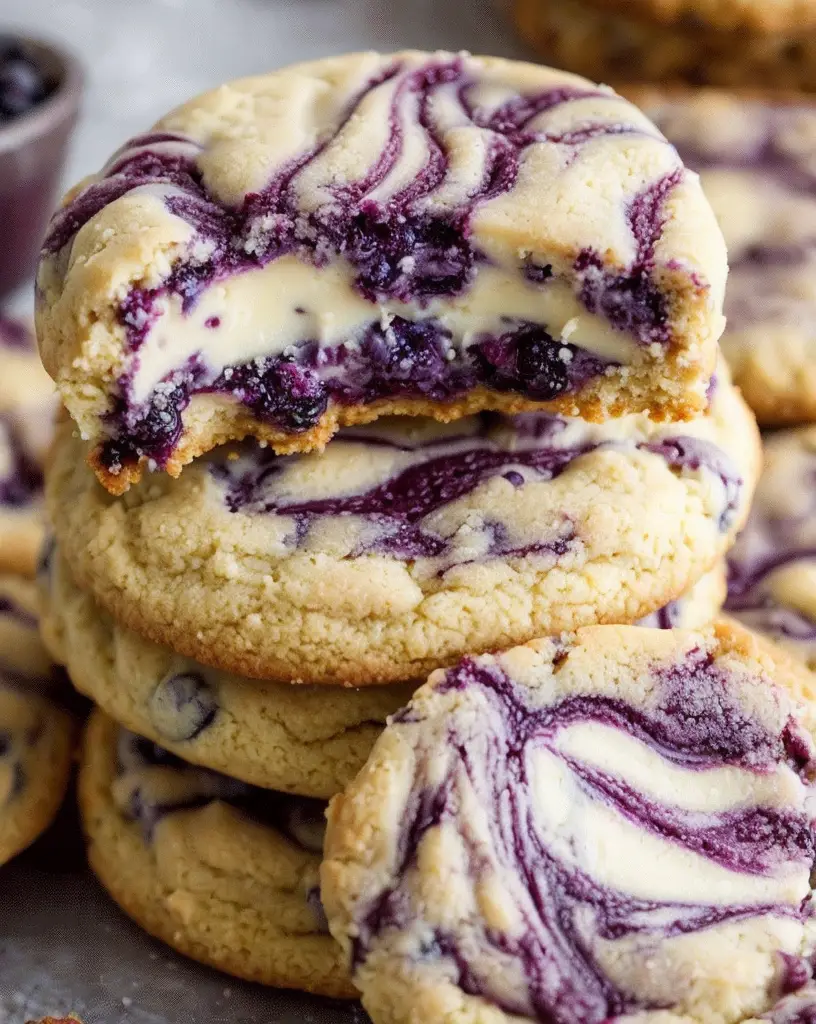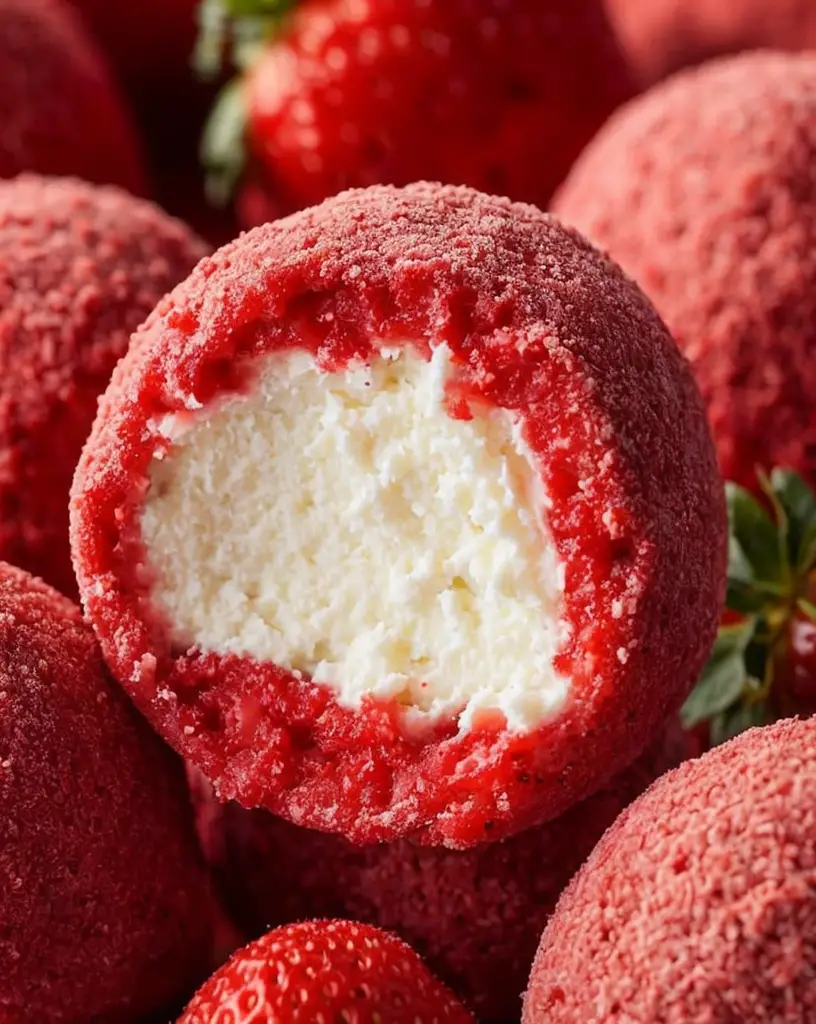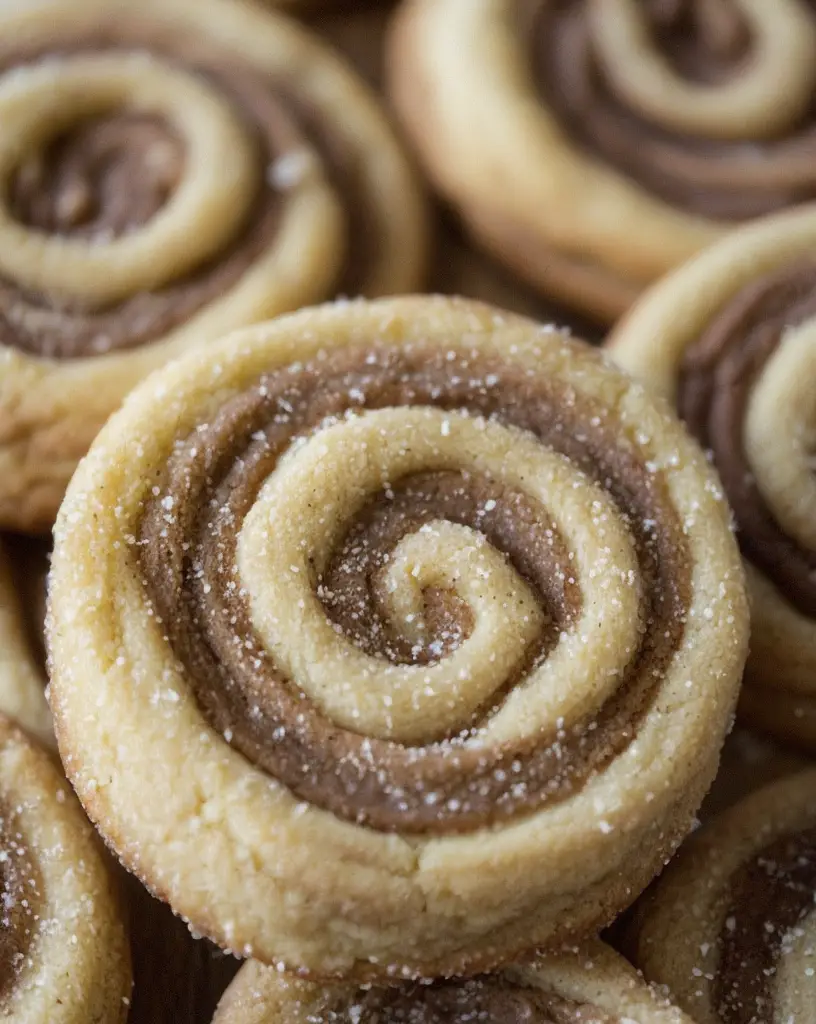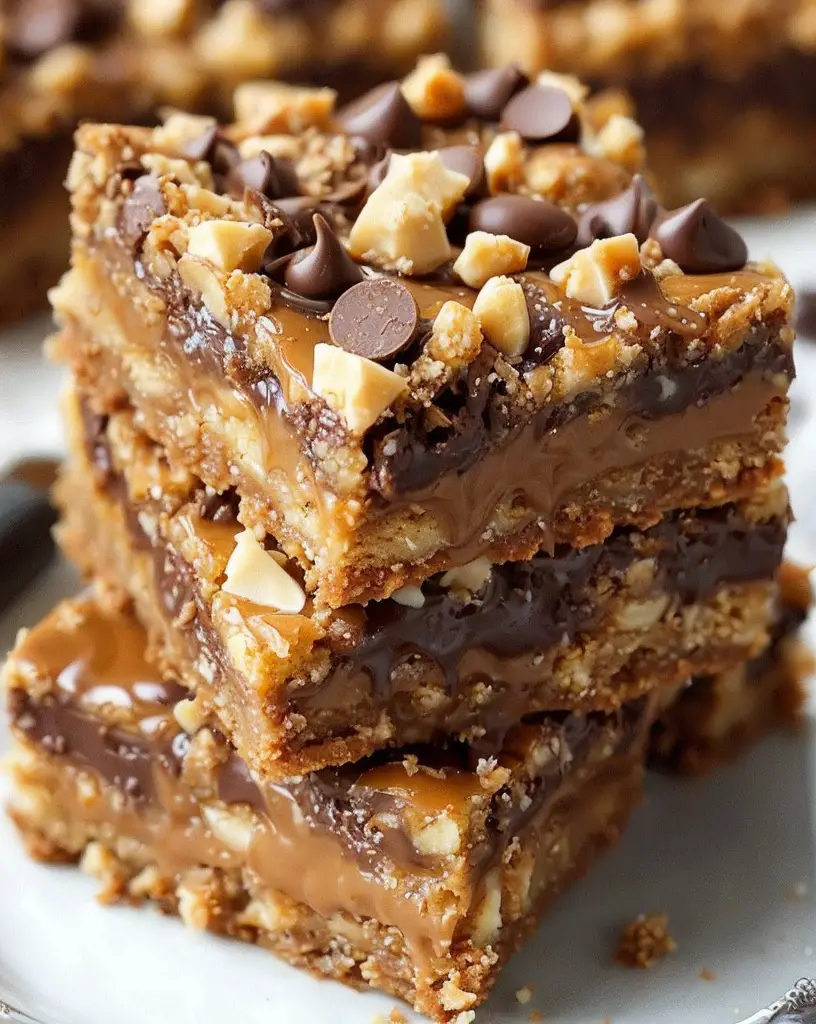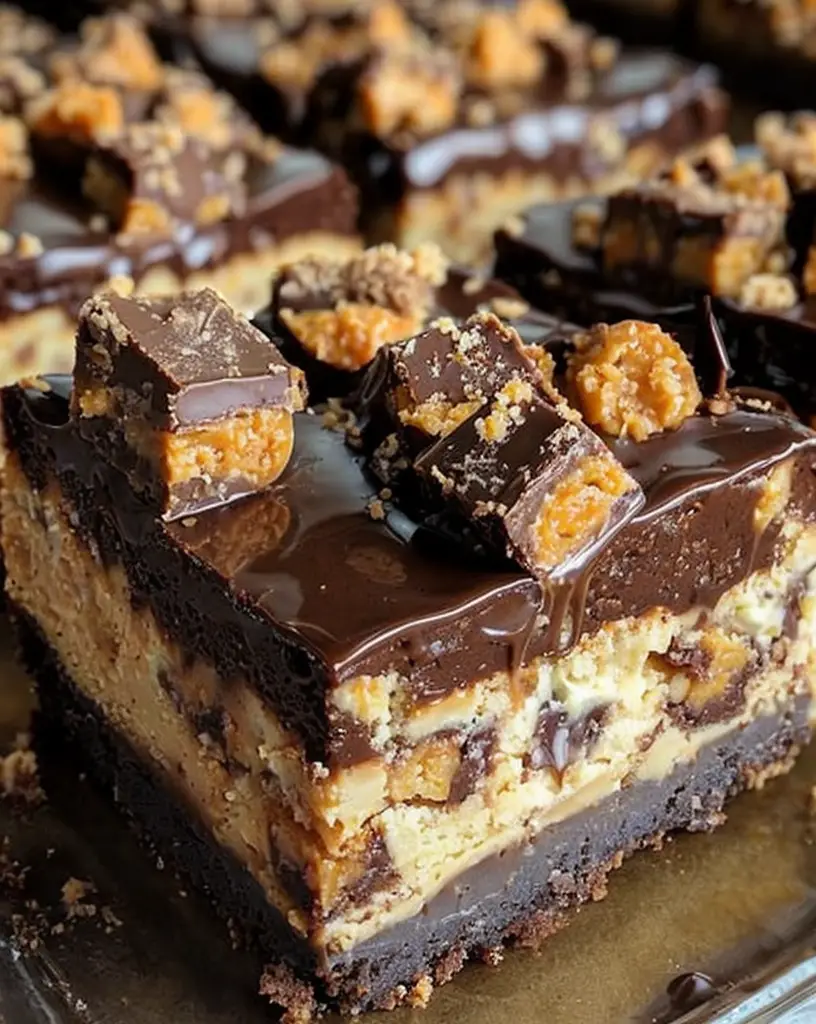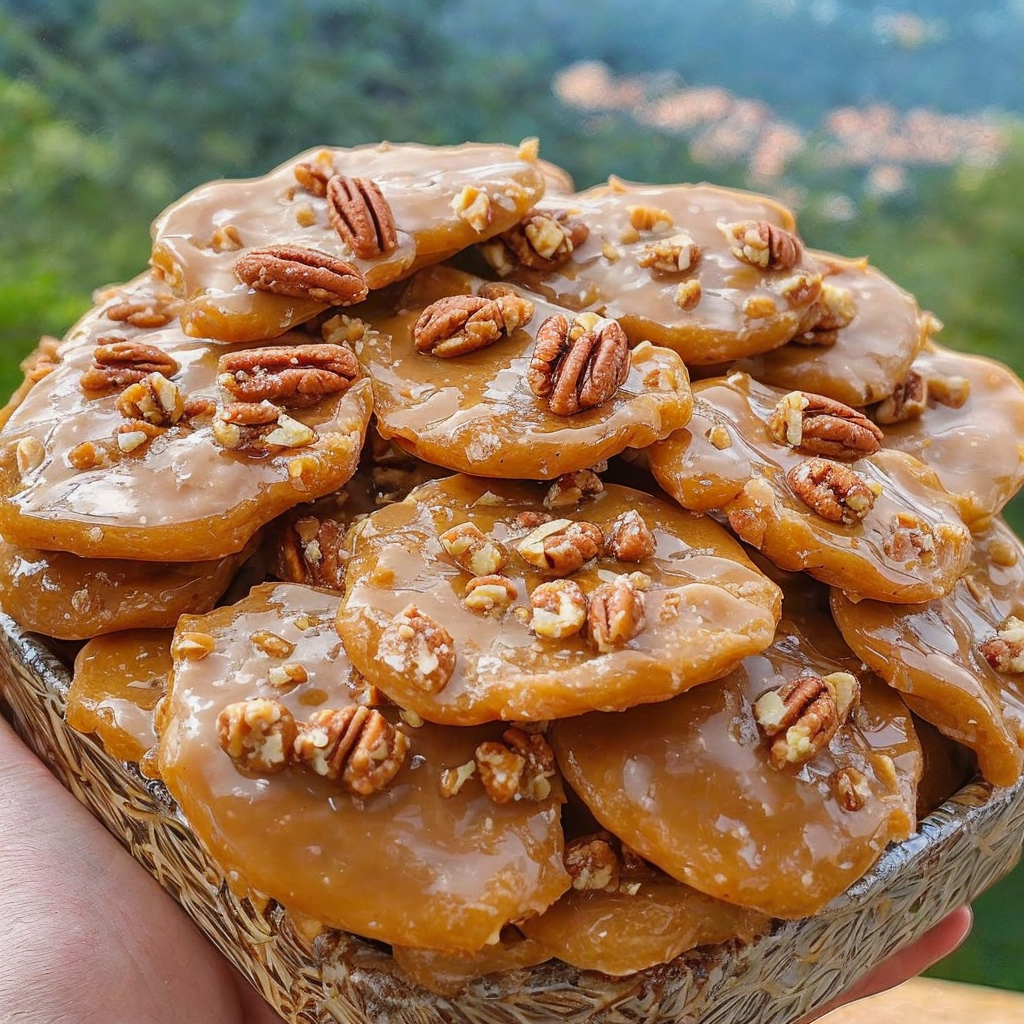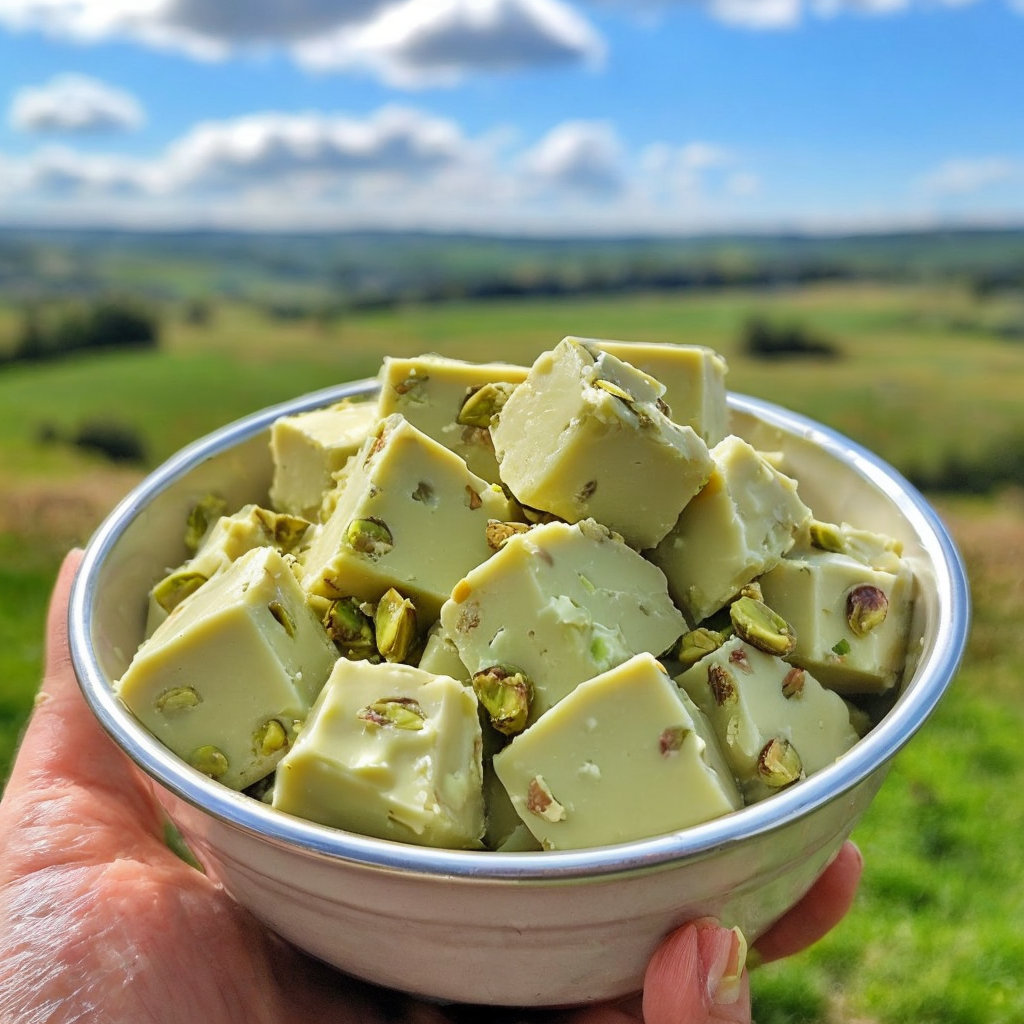Easy Blueberry Cheesecake Swirl Cookie Recipe: A Delightful Treat
Satisfy your sweet tooth with this delightful Easy Blueberry Cheesecake Swirl Cookie Recipe. These cookies combine the rich creaminess of cheesecake with the burst of fruity blueberries — a match made in dessert heaven. Imagine sinking your teeth into a soft, chewy cookie that’s packed with flavorful swirls of blueberry, perfectly complementing a cheesecake base. It’s an irresistible treat for any occasion, combining classic flavors in a new and exciting way.
Creating the magic of blueberry cheesecake in cookie form is easier than you might think! This recipe simplifies the cheesecake-making process and infuses it directly into scrumptious cookies. Not only is it a fun twist on traditional cheesecake, but it also offers the convenience of being a finger food — a perfect snack or dessert addition for a potluck or family gathering. With a preparation time of just under half an hour, this is one of those delightful recipes you’ll turn to time and again for an easy sweet fix.
Quick Recipe Highlights
- Flavor Profile: Enjoy a creamy cheesecake taste with the sweet yet tangy burst of blueberries in every bite.
- Texture: These cookies boast a soft, chewy texture contrasted by the slight crispiness of the edges.
- Aroma: You’ll notice a rich vanilla scent with a hint of fresh blueberries as the cookies bake.
- Visual Appeal: The vibrant purple-blue swirl within a golden cookie makes for a captivating dessert plate.
- Skill Level Needed: Designed to be an easy recipe, it’s suitable for both novice and experienced bakers alike.
- Special Equipment: Requires a hand mixer or stand mixer for best results in achieving the cheesecake texture.
Recipe Overview
- Difficulty Level: Thanks to straightforward instructions and familiar techniques, this is classified as an easy recipe.
- Category: Perfect as a sweet treat, snack, or dessert — particularly appealing for small social gatherings.
- Cuisine: Primarily influenced by American baking traditions, drawing on both classic cookie and cheesecake recipes.
- Cost: An affordable indulgence, the ingredients are cost-effective and commonly found in most kitchens.
- Season: Best enjoyed in the summer when blueberries are ripe, but equally accessible all year round with frozen berries.
- Occasion: Versatile for any occasion, be it a birthday celebration, holiday treat, or simple weekend bake.
Why You’ll Love This Recipe
If you’re a cheesecake lover, these cookies offer all the taste appeal without the need for an elaborate setup. They combine the decadence of cheesecake with the convenience of a cookie, creating an unexpected yet delightful treat. The rich, creamy texture juxtaposed with bursts of fruity flavor leaves your taste buds deeply satisfied. And for those fond of visually appealing foods, the vibrant swirls within these cookies make for a delightful presentation.
Convenience is one of the major benefits of this Easy Blueberry Cheesecake Swirl Cookie Recipe. Unlike traditional baking methods for cheesecake, which can be time-consuming and slightly finicky, these cookies streamline the process into quick and simple steps. A mix-and-go approach ensures less time in the kitchen and more time enjoying delicious treats with loved ones.
Nutritionally, these cookies strike a balance. The use of blueberries not only enhances flavor but also introduces beneficial antioxidants into your diet. While indulgent, each cookie can fit into a balanced eating plan, ensuring you’re treating yourself without overindulgence. Their portion-controlled nature allows for a sweet end to a meal without it being overwhelming.
Beyond their flavor, these cookies act as a conversation starter at any gathering. Sharing the ingenuity and simplicity behind these cheesecake-inspired cookies often prompts awe and encourages other baking enthusiasts to step outside of traditional dessert recipes. Guests and hosts alike relish the novelty and comfort blended in each bite.
Finally, cost-effectiveness cannot be overlooked. With ingredients that offer multi-use potential in different recipes, your investment in creating these cookies translates into both immediate satisfaction and future culinary projects. Even better, homemade versions often outshine store-bought options in freshness and quality, providing value beyond monetary savings.
Historical Background and Cultural Significance
This delightful cookie combines elements of both cookie and cheesecake, two desserts with rich historical backgrounds. Cheesecake, with origins tracing back to ancient Greece, was a delicacy served to Olympic athletes. Over centuries, its creamy texture and adaptable flavor profiles spread across cultures, leading to the modern iterations we love today, including the popular New York-style cheesecake.
Culturally, cheesecake represents indulgence and celebration, making these cookies a symbol of fusion between casual snacking and celebratory desserts. By incorporating the traditional elements of cheesecake into a cookie, this recipe honors its heritage while creating something fresh and innovative, bridging generations of dessert lovers in a bite-sized form.
In terms of evolution, these cookies capture the creativity of modern baking, where elements of cherished recipes are reimagined to suit contemporary tastes and convenience. The move from complex, time-intensive baking, to more accessible and straightforward recipes, reflects broader culinary trends where flavor combinations are continuously explored and cherished.
Across different regions, cheesecake recipes adapt to local ingredients and palates. The blueberry inclusion pays homage to American summer fruits, representing the recipe’s cultural adaptation. In refrigerated or baked forms, such desserts offer consistent delight across regions, now reimagined as these easy cookies, making joyfully lighter work of a well-loved classic.
Ingredient Deep Dive
Blueberries serve as the star ingredient in this recipe, recognized not only for their vibrant color and flavor but also their impressive antioxidant content. Historically, these berries have been a dietary staple among Native American tribes and continue to flavor various desserts globally. When selecting blueberries, opt for plump, firm ones with a consistent blue color.
Their storage is simple: keep them refrigerated to extend freshness, and rinse just before use. If fresh berries are unavailable, frozen alternatives are an excellent substitution, maintaining quality and flavor when blueberries are out of season. They add not just taste but a visual element that enlivens any dessert plate.
A key component, cream cheese provides the rich, dairy foundation of these cookies, offering the smooth consistency characteristic of cheesecake. Since its commercial production in the U.S. in the late 19th century, it has become integral to countless dessert recipes. Opt for full-fat versions for the creamiest texture, and keep it refrigerated until use.
When it comes to storage, cream cheese retains its quality when kept cold, with any unused portions stored back promptly. Its high-fat content allows it to freeze reasonably well, though it’s best used fresh for optimal texture. If dairy-free adaptations are desired, consider cultured coconut cream or cashew-based options for a vegan alternative.
Common Mistakes to Avoid
- Skipping moisture control: Ensure blueberries are fully dried after rinsing to prevent soggy dough.
- Overmixing the batter: Overworking the dough can lead to tough cookies rather than the desired soft texture.
- Incorrect ingredient temperatures: Allow cream cheese to soften at room temperature for smoother mixing.
- Insufficient swirling technique: A gentle swirl creates vibrant, visible blueberry streams within the cookies.
- Baking time misjudgment: Keep an eye on the timer — overbaking will dry out the cookies.
- Improper cookie spacing: Ensure space between cookies on the baking sheet to allow for even expansion.
- Using the wrong sugar type: Stick to the recipe’s specified sugar for correct sweetness and texture.
- Lack of proper measuring: Accurate measurement of ingredients, particularly flour, ensures consistency.
- Skipping cooling rack: Allow cookies to cool on a wire rack to prevent sogginess.
- Not chilling dough: If dough feels overly soft, a quick chill can make it more manageable.
Essential Techniques
Mastering the swirl technique ensures the tangled dance of blueberries within your dough. This visual and flavorful pattern is achieved by gently folding the blueberry mixture through the prepared dough to create streaks. Overzealous swirling can blend the colors too much, losing the marbled effect that’s not only attractive but also offers pockets of intense blueberry flavor.
Another key technique is the creaming method, where sugar is beaten with softened cream cheese to create a fluffy mixture. Properly creaming the ingredients incorporates air into the batter, providing structure and softness in the final baked cookies. The right texture is a delicate balance of maintaining the creaminess of the cheesecake while ensuring the cookie retains its structural integrity.
The incorporation of blueberries requires gentle hands to maintain the integrity of each berry. Crushing blueberries releases juice prematurely, which can alter the cookie’s texture and baking result. To achieve this, fold the berries into the dough with minimal pressure until evenly distributed across the mixture.
Observing the baking process also plays into the success of these cookies. While recipes give estimated times, slight variations in ovens mean keeping a keen eye on cookies as they approach the end of their bake time to prevent over-browning. The desired finish is slightly golden, particularly on the edges, giving way to a soft interior.
Pro Tips for Perfect Easy Blueberry Cheesecake Swirl Cookies
To enhance blueberry flavor, consider adding a touch of lemon zest to the dough. It accentuates the berry’s natural tartness and complements the richness of the cheesecake element. Balancing these flavors is key to a well-rounded cookie profile.
For uniform cookies, scoop dough with a consistent-sized tool, such as a tablespoon or a small ice cream scoop. This ensures even baking and a professional appearance, crucial for presentations.
Chilling the dough before baking, even briefly, can help firm up the texture, making it easier to work with, especially in warmer climates. Slightly firmer dough allows for easier handling and shaping.
If aiming for a more intricate swirl, reserve part of the blueberry mix for a post-scooping drizzle over each cookie. Lightly swirl with a skewer or toothpick to enhance the visual marbling before the bake for a dynamic presentation.
Incorporating a teaspoon of cornstarch into the berry mixture can prevent excess moisture, particularly when using frozen berries. This prevents the cookies from becoming too wet as they bake, while the cornstarch itself has no noticeable texture or taste once integrated.
For a richer color, use frozen blueberries. As they thaw in the dough, they release more juice, producing a naturally intense swirl without any artificial coloring, giving your cookies a stunning marbled finish.
Adjust the level of sweetness by experimenting with different types of sugar. A small amount of brown sugar can impart a deeper, more caramelized flavor, complementing the cream cheese base beautifully.
Variations and Adaptations
For a regional twist, consider replacing blueberries with locally available fruits, crafting variations like raspberry cheesecake swirl cookies or a tropical mango marbled version. These regional variations not only offer distinct flavors but also highlight local produce, making each bake special and unique to its geographical context.
Seasonal ingredients can also replace blueberries, allowing you to adapt this recipe throughout the year. Think cranberry swirls in winter or cherry infusions in spring, providing seasonal whimsy and highlighting fresh produce year-round.
Dietary modifications are simple to implement. For a gluten-free adaptation, use a 1:1 gluten-free flour blend, while maintaining the same measurements and method. To create a dairy-free version, experiment with plant-based cream cheese alternatives and coconut oil instead of butter.
Introducing flavor variations is straightforward. A touch of almond extract can transform the profile of these cookies by adding a deep, nutty aroma without overpowering the classic blueberry cheesecake combination.
For texture alternatives, consider incorporating crushed nuts, such as pecans or walnuts, for added crunch. This contrast can elevate each bite and introduce nutty undertones that pair beautifully with the main flavors.
Presentation alternatives like sandwiching two cookies with a cream cheese filling provide a playful twist, turning them into an exciting dessert selection perfect for children’s parties or creative gifting options.
Serving and Presentation Guide
Opulent plating elevates the enjoyment of these cookies. Present them stacked on a cake stand or scattered elegantly on a decorative plate, highlighting the marbled blueberry swirl. This makes them instantly more inviting and transforms everyday treats into a conversation piece.
Garnishing with a dusting of powdered sugar enhances their appearance, adding a touch of class and a slight sweetness, which pairs seamlessly with the natural tartness of blueberries. If you prefer a burst of additional color, delicate edible flowers can add an artistic flair without overshadowing taste.
Traditional accompaniments like a scoop of vanilla ice cream or a spoonful of sour cream on the side add creaminess and elevate the overall sensory experience. These elements are beautifully refreshing when paired with warm cookies straight from the oven.
For modern serving suggestions, try skewering these cookies alongside fresh fruit chunks or chocolate pieces. This creative presentation inspires intrigue, especially useful for children’s parties or casual gatherings.
Be mindful of temperature considerations when serving. These cookies are best enjoyed at room temperature, allowing their creamy interiors to fully soften for maximum flavor release, maintaining their delightful chewiness.
Control portions easily by pre-slicing dough into evenly spaced discs. This approach not only influences baking times but also ensures caloric and nutritional awareness for each serving, keeping balance in mind for every delightful indulgence.
Wine and Beverage Pairing
Pairing options for these cookies are versatile, enhancing the overall eating experience. A light, fruity rosé or a crisp Riesling pairs delightfully, with their acidity complementing the rich cream cheese and sweet blueberries, cutting through any richness and enhancing the flavors.
Non-alcoholic alternatives like a berry-infused iced tea or a simple lemon water can cleanse the palate, accentuating each cookie’s flavor profile. For a classic touch, a glass of fresh milk always complements baked goods splendidly, particularly appealing to younger taste buds.
Coffee enthusiasts might consider pairing these cookies with a mild roast, which harmonizes well with the sweetness without overpowering subtle flavors. A gently brewed tea, like chamomile or white tea, offers a mellow backdrop, letting the cookies take center stage.
For optimal enjoyment, serve beverages slightly chilled or room temperature, ensuring they provide a refreshing counterbalance to the soft, chewy texture of the cookies. Whether lightly chilled wines or room-temperature brews, mindful pairing heightens enjoyment.
Tailor serving suggestions to the occasion — a sophisticated gathering might lean towards the elegance of wine pairing, while casual brunches offer more freedom with coffee or tea collaborations, enriching social experiences centered around delightful desserts.
Storage and Shelf Life
Ensuring the cookies maintain their delicious taste and texture involves correct storage methods. Store in an airtight container at room temperature for up to three days to retain freshness. Refrigerate for extended shelf life, up to a week, though the texture may become slightly firmer.
For longer preservation, consider freezing the cookies soon after cooling. Place in a single layer on a baking sheet to freeze until solid, then transfer to a resealable bag or airtight container, allowing them to stay fresh for up to three months and ensuring easy access for future cravings.
Storage containers should provide a full seal to prevent the cookies from becoming stale or absorbing ambient odors, which can detract from their natural flavors. Proper container choice plays a crucial role in maintaining the delightful freshness encapsulated in each bite.
Signs of spoilage include a loss of freshness, staleness, or an off flavor, which indicates they are past their prime. However, diligent storage practices ensure their delightful taste remains an option for days to come, prolonging the joy these cookies provide.
Reheating is simple — a few seconds in the microwave reclaims the soft, warm characteristics reminiscent of freshly-baked cookies. A gentle touch ensures they do not overheat, maintaining their best texture and flavor profile consistently.
Freeze-unbaked dough discs can be an efficient method for quick future baking sessions, preserving them in separate layers using parchment paper. This makes advancing plans straightforward, providing nearly instant cookie satisfaction when desires strike.
Make Ahead Strategies
To simplify preparation, dough can be prepared in advance, refrigerated for up to two days or frozen for even extended periods, requiring only slight adaptation for a seamless make-ahead approach. This saves-time on busy days, providing a quicker transition from dough to delicious cookies.
Between steps, refrigerate the dough to maintain its integrity, especially after the swirling or folding process. A brief chill firms the dough, ensuring easier handling and preserving the marbled blueberry cheesecake effect.
Quality is enhanced using alternative storage solutions. Dividing the dough into smaller batches allows manageable portion sizes during subsequent assembly. Label individual batches for quick reference, keeping everything organized.
Assembled cookies, unbaked, can be stored individually wrapped or arranged with slight spacing in airtight containers. This whole-process flexibility ensures accommodating shifting schedules without sacrificing quality.
Reheating pre-baked cookies involves gentle warming techniques, just enough to restore their moist, chewy characteristics. This recreates the allure of freshly baked results even when cookies have been prepared well in advance.
To maintain freshness post-bake, introduce fresh elements like a quick berry zest glaze or sprinkle before serving. Homemade touches alongside make-ahead techniques ensure those fresh flavors shine when it’s time to enjoy.
Scaling Instructions
Adjusting recipe quantities becomes straightforward using simple calculations for halving or doubling the recipe to meet specific needs. Proportional scaling preserves the integrity of the flavors and texture while adjusting for different quantities.
Equipment modifications might include larger mixing bowls or scaling oven space management by using multiple baking sheets when accommodating larger batches. These minor adjustments ensure seamless transitions across differing scales of production.
Modifying baking times slightly may be necessary, checking for the familiar golden hue, especially when changing batch sizes. Observing these visual cues assures consistency despite scaling up or down, offering reliability across variations.
When storing larger batches, distribute cookies evenly for long-term preservation, allowing for ample airflow around storage containers and ensuring optimal freshness throughout the batch.
For smaller quantities, pay attention to ingredient fractions, especially when measuring more significant components like flour or sugar, ensuring maintained balance in taste and structure.
Efficiency-enhancing tips include pre-measured ingredients for larger-scale improvements, facilitating smooth operations even with increased volumes. These practices make feeding a crowd or conserving resources equally practical endeavors.
Nutritional Deep Dive
Exploring the nutritional profile reveals a thoughtful balance of macronutrients. Carbohydrates are prominent, attributed mainly to sugar and flour, providing energy alongside moderate fats from cream cheese for satiety.
Micronutrient analysis showcases notable vitamin C from blueberries alongside trace minerals beneficial to balanced intake. These contribute positively despite the indulgent appeal of this dessert, aligning flavor with potential health benefits.
Health benefits lightly skew towards enhanced fruit-based antioxidants from blueberries, contributing additional value beyond traditional cookie considerations. This small nutritional boost champions thoughtful ingredient inclusion.
Awareness of dietary considerations safeguards individual needs, making dietary adjustments feasible while preserving enjoyment of traditional flavors, supported by ingredient substitution guidance.
Portion control mitigates overconsumption, tailoring consumption to align with nutritional goals. Clear understanding of individual cookie calorie counts assists nutritional planning without eschewing these delightful treats.
Weight management is facilitated through balance, integrating occasional indulgences thoughtfully alongside everyday dietary routines, affirming that enjoyable treats need not compromise nutritional intentions.
Dietary Adaptations
Creating a gluten-free version involves replacing standard flour with a gluten-free blend, allowing those with gluten sensitivities to enjoy both flavor and texture without compromise, capacitating broader enjoyment.
For a dairy-free approach, substitute with plant-based cream cheese and vegan butter alternatives, maintaining structural integrity while accommodating lactose intolerance or dietary preferences within the same delicious cookie framework.
Vegan adaptations require a nuanced touch, replacing cream cheese and butter with vegan counterparts, and altering egg components using flaxseed or chia seed alternatives. Such changes firmly accommodate a full plant-based lifestyle without forsaking flavor.
A low-carb approach pivots towards almond or coconut flour, reducing carbohydrate content while adhering to keto or low-carb principles. Collaborative adjustments help adapt these cherished cookies while tailoring dietary needs.
Paleo and low-FODMAP adjustments emphasize an adaptive response, accommodating additional dietary parameters through strategic ingredient selection, aligning these cookies with various lifestyle approaches while keeping essence intact.
Specific diets are welcomed with targeted interventions, recognizing widely varied dietary landscapes. Each thoughtful modification opens inclusive avenues, allowing more people to enjoy the creative synthesis of cheesecake and cookies.
Troubleshooting Guide
Achieving the desired soft texture entails controlled ingredient temperatures and avoiding overbaking. Slight underbaking maintains chewiness, essential to rich, delectable results.
Poor flavor balance can be adjusted through refined sugar-salt ratios and added zest, ensuring the desired sweetness and burst of tangy blueberries complement the cookies harmonously.
Temperature problems dissipate with proper chilling between steps, keeping dough manageable and optimizing oven results. Attention to temperature guides prevents unwanted spread or drying.
Equipment challenges diminish through proper preparation, with correctly sized tools ensuring consistent cookie forms, facilitated by a well-organized work zone promoting swift adjustments.
Ingredient substitutions are visually distinct yet remain cohesive, maintaining texture alongside integrity while varying dietary or flavor needs.
Timing concerns resolve through vigilant observations, cross-checking with recipe guidelines and key visual cues to ensure cookies retain soft centers and golden tops without compromise.
Recipe Success Stories
Many in the community have embraced this tasty adventure, sharing their decorative and flavorful outcomes via social media. Enthusiastic responses highlight ease of preparation, an encouraging gateway to achieving baking success with impactful results.
Readers have offered creative adaptation spins, sharing impressive anecdotes involving revamped flavors and appealing visuals, underscoring the adaptability and versatile nature this recipe delivers.
Variations involving seasonal fruits or switched extracts from readers showcase successful individualization, proving the ease and flexibility of the essential recipe base, fostering joy in each unique creation.
Photographic essays created by readers beautifully document the journey of producing these cookies, revealing step-by-step transformations and final plated temptations. Photography aids community understanding while visually demonstrating shared achievement satisfaction.
Suggestions from readers bring nuances that refine techniques or broaden flavor horizons within this cherished recipe, illustrating collective engagement where shared experiences enrich the communal baking journey.
Frequently Asked Questions
Q: Can I use frozen blueberries for this recipe?
A: Yes, frozen blueberries work well. Thaw and drain excess liquid first. They may add a deeper hue and slightly adjust moisture.
Q: How do I store unbaked dough?
A: Refrigerate it for up to two days or freeze individual dough balls on parchment. Thaw briefly before baking.
Q: What substitutes work for cream cheese?
A: Vegan cream cheese or thick Greek yogurt can substitute, keeping allergy considerations in mind while retaining flavor.
Q: Can these cookies be made sugar-free?
A: Replace sugar with a suitable sweetener like Stevia or Erythritol, adjusting for texture differences in sweetness balance.
Q: Are there variations for nut-infused versions?
A: Incorporate finely chopped nuts into dough or use them as a topping for added crunch and flavor depth.
Q: What’s the best way to achieve photogenic swirls?
A: Gently fold blueberries into dough or drizzle on top after dough is portioned—use a fork to swirl lightly, ensuring vivid marbling.
Q: Best method for reheating stored cookies?
A: Microwave briefly, 5–10 seconds each, ensuring soft centers and warmth akin to freshly baked enjoyment.
Q: How do I handle sticky dough issues?
A: Chill dough if sticky, making it more manageable and less prone to undesirable spread during baking.
Q: Can I modify the recipe for different fruits?
A: Certainly, substitute favorite fruits, like strawberries or cherries, adapting sugar levels to match different sweetness.
Q: What’s the primary cause of baking inconsistencies?
A: Variability often results from uneven oven heating or inaccurate ingredient measurement. Address these with reliable tools.
Q: How can I enhance cheesecake flavor?
A: Blend in a touch of sour cream to heighten flavors and mimic authentic cheesecake nuances within the cookie base.
Q: Will these cookies work as a bar alternative?
A: Bake dough in a square pan instead, adjusting time, and enjoy as blueberry cheesecake bars, cutting into desired portions post-bake.
Additional Resources
Delve into related recipes that complement your journey into blended cheesecake treats, where lemon bars or raspberry swirl cookies might offer further inspiration for flavorful exploration.
Explore technique guides for honing your folding and swirling skills, ensuring vibrant, even spreads enhance your baking satisfaction and visual results within cheesecake cookie creations.
Ingredient information links highlight valuable insights into selecting quality blueberries and cream cheese, accounting for flavor and texture optimality in a myriad of applications.
Equip yourself with recommended tool guidance tailored to enhancing results with proper measuring utensils, reliable mixers, and baking trays ensuring consistent, delightful execution.
Consider seasonal variations, where suggestions foster adaptive ingredients across distinct climates, extending the joy of these cookies beyond fixed seasons into a welcomed year-round favorite.
Join the Conversation
Share your Easy Blueberry Cheesecake Swirl Cookie creations across social media platforms. Use photography tips to capture each elegant swirl and post-reception delight. Community engagement thrives through shared recipes and lively variations that celebrate unique twists alongside collective experiences.
Contribute to recipe reviews, offering fresh ideas or minor adjustments as part of our communal knowledge exchange. Such feedback allows others to benefit from successful adaptations, highlighting shared expertise among fellow bakers.
Engaging in reader comments unveils new perspectives and recommendations, drawing from a wider network’s experiences, which brings fresh insight into this timeless cookie delight. Being part of an active dessert-loving network broadens the palate and enriches the joy of baking.
The Recipe
Easy Blueberry Cheesecake Swirl Cookies
Serves: 24 cookies
Prep Time: 15 mins
Cook Time: 12 mins
Total Time: 27 mins
Kitchen Equipment Needed
- Mixing bowls
- Hand mixer or stand mixer
- Baking sheet
- Parchment paper
- Cookie scoop
- Cooling rack
Ingredients
- 1 cup cream cheese, softened
- 1/2 cup butter, softened
- 1 cup granulated sugar
- 1 large egg
- 1 teaspoon vanilla extract
- 1/2 teaspoon salt
- 1/2 teaspoon baking powder
- 2 cups all-purpose flour
- 1 cup fresh or frozen blueberries
- 1 tablespoon granulated sugar (for blueberry mixture)
Directions
- Preheat the oven to 350°F (175°C). Line baking sheets with parchment paper.
- In a mixing bowl, beat cream cheese and butter together until smooth and creamy.
- Add sugar and continue to mix until the mixture is light and fluffy.
- Beat in egg and vanilla extract, mixing well until combined.
- In another bowl, whisk together flour, salt, and baking powder. Gradually add to the cream cheese mixture, blending until just combined.
- In a small bowl, mix blueberries with 1 tablespoon of sugar. Gently fold into the dough to create streaks.
- Using a cookie scoop, drop dough onto prepared baking sheets, slightly spacing them apart.
- Bake for 10-12 minutes, or until edges are lightly golden. Allow cookies to cool on a wire rack.
Recipe Notes
- For a citrus twist, add 1 teaspoon of lemon zest to the dough.
- Store cookies in an airtight container at room temperature for up to three days.
- Frozen blueberries may require a slightly longer baking time.
